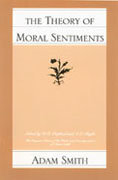BUDGETING & CONTROL
INFORMATION OF THE COMPANY IS WRITTEN IN ITALIC BELOW EACH TABLE
Steps in Preparing a Master budget for Basket, Inc. 1. Sales Budget Month Sales in units Price per magnet Sales in dollars April 20,000 @10 $200,000 May 50,000 @10 $500,000 June 30,000 @10 $300,000 July 25,000 @10 $250,000 2. The Production Budget April May June Budgeted unit sales +Desired ending inventory =Total units needed -Less beginning inventory =Units to produce The management of Basket wants ending inventory to be 20 percent of the next month's budgeted sales in units. 4,000 units were on hand March 31. Ending inventory = 20% of next month's sales needs. June ending inventory = 0.20 *25,000 July units = 5,000 units Beginning inventory is last month's ending inventory.3. The Production Budget Material Purchase April May June Units to produce *Material needed per unit (5 kg per unit) =Material needs (kg) for units to produce +Desired units of material in ending inventory =Total units of material needed (kg) -Less units of material in beginning inventory =Units of material to purchases (kg) Ending inventory = 10% of next month's material needs. June ending inventory = 0.10 *(23,000 units * 5 kg per unit). June ending inventory = 11,500 kg. Beginning inventory is last month's ending inventory. The materials inventory on March 31 is 13,000 kilogram. July production is budgeted for 23,000 units = 23,000*5 kg= 115,000 *0.1=11,500 kg 4. Cash Payments for Material Purchases April May June Material purchases (kg) Cost per pound $ 0.40 $ 0.40 $ 0.40 Total cost Payables from March April purchases May purchases June purchases Total payments in month 1/2 * $56,000 = $28,000 Material used in production cost $0.40 per pound. One-half of a month's purchases are paid for in the month of purchase; the other half is paid in the following month. No discount terms are available. The accounts payable balance on March 31 is $12,000.5. The Production Budget Direct Labor April May June Units to produce Hours per unit Total hours required Wage rate per hour Direct labor cost Each unit produced requires 3 minutes (0.05 hours) of direct labor. Basket employs 30 persons for 40 hours each week at a rate of $10 per hours. Any extra hours needed are obtained by hiring temporary workers also at $10 per hour. 6. Cash Payments for Manufacturing Overhead April May June Units to produce Variable overhead rate Variable overhead cost Fixed overhead Total mfg. overhead cost Deduct depreciation Manufacturing overhead cash Variable manufacturing overhead is $1 per unit produced and fixed manufacturing overhead is $50,000 per month. Fixed manufacturing overhead includes $20,000 in depreciation which does not require a cash outflow. 7. Cash Payments for 5 & A Expenses Budgeted unit sales Variable 5&A per unit Variable 5&A expense Fixed 5&A expense Total 5 & A expenses Deduction depreciation 5&A expense cash Selling expense budgets contain both variable and fixed items. 0 Variable items: shipping costs and sales commissions. o Fixed items: advertising and sales salaries. Administrative expenses budgets contain mostly fixed items. 0 Executive salaries and depreciation on company offices. Variable selling and administrative expense are $0.50 per unit sold and fixed selling and administrative expenses are 570,000 per month. Fixed selling and administrative expenses include $10,000 in depreciation which does not require as cash outflow. 8. Cash Receipts Budget Budgeted unit sales Price per unit Budgeted sales revenue Receipts from March sales Receipts from April sales Receipts from May sales Receipts from June sales Total cash receipts All sales are on account. Basket's collection pattern is: 70% collected in the month of sale 25% collected in month after sale 5% will be uncollectible Accounts receivable on March 31 is $30,000, all of which is collectible. 9. Comprehensive Cash Budget Beginning cash balance Cash receipts Cash available Cash payments: Material budget Labor budget Manufacturing 0H budget S&A expense budget Equipment purchases Dividends Total Cash Payment Balance before financing Borrowing Principal repayment Interest Ending cash balance Comprehensive Cash Budget Additional information Basket Company: 0 Has a $1 00, 000 line of credit at its bank, with a zero balance on April 1. Maintains a $30,000 minimum cash balance. Borrows at the beginning of a month and repays at the end of a month. Pays interest at 16 percent when a principal payment is made. Pays a $51,000 cash dividend in April. Purchase equipment costing $143,700 in May and $48,800 in June. Has a $40,000 cash balance on April 1. 000000 10. The Budgeted Income Statement Basket Company Budgeted Income Statement For the Three Months Ended June 30 Sales (100,000 units @ $10) Cost of goods sold (@439) Gross Margin Selling and administrative expenses Operating income Interest expense Net Income m Total mfg 0H for guarter = 251,000 = $49.70 per hr. Total labor hours required 5,050 hrs. From labor and Mfg. OH budgets Labor Hours Mfg. OH Manufacturing overhead is applied April 1,300 76,000 based on direct labor hours. May 2,300 96,000 June 1,450 79,000 Total 5,050 251,000 11. Budgeted Balance Sheet Basket Company Budgeted Balance Sheet June 30, 2009 Current assets Cash Account receivable Raw material inventory Finished goods inventory Total current assets Property and equipment Land Building Equipment Total property and equipment Total assets Liabilities and Equity Accounts payable Common stock Retained earnings Total liabilities and equities Baskets reports the following account balances on June 30, prior to preparing its budgeted financial statements: Land - $50,000 Building (net) - $174,500 Equipment (net) - $192,500 Common stock - $200,000 Retained earnings - $148, 150 Paid dividends of $51,000













